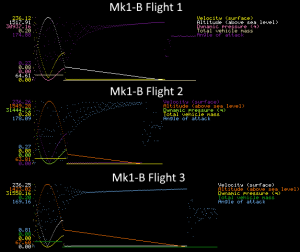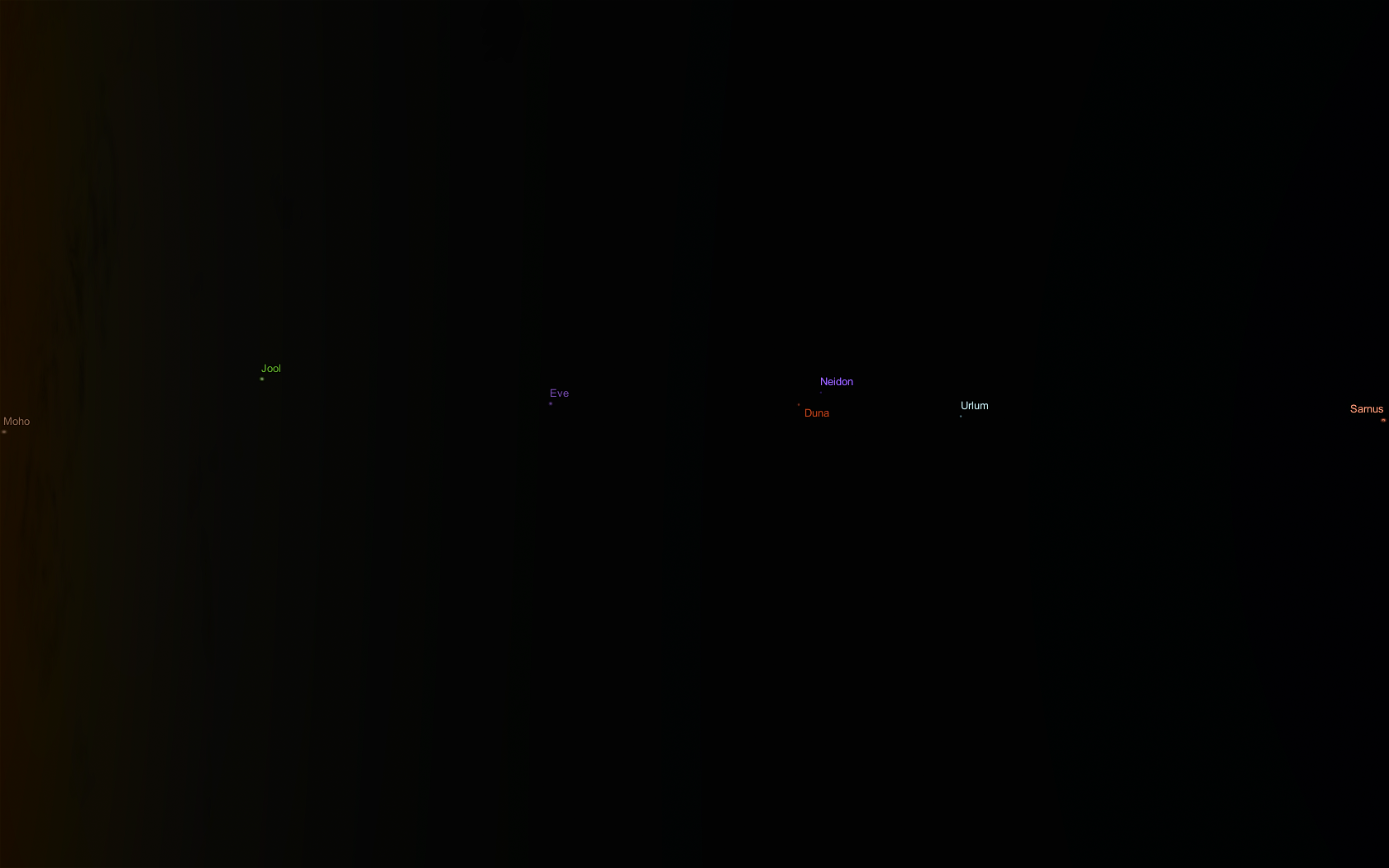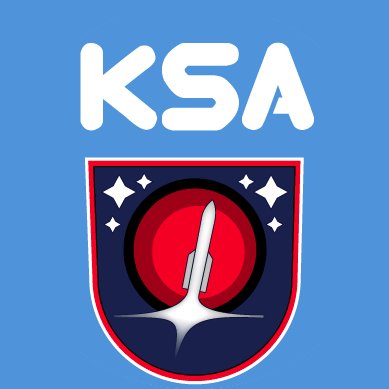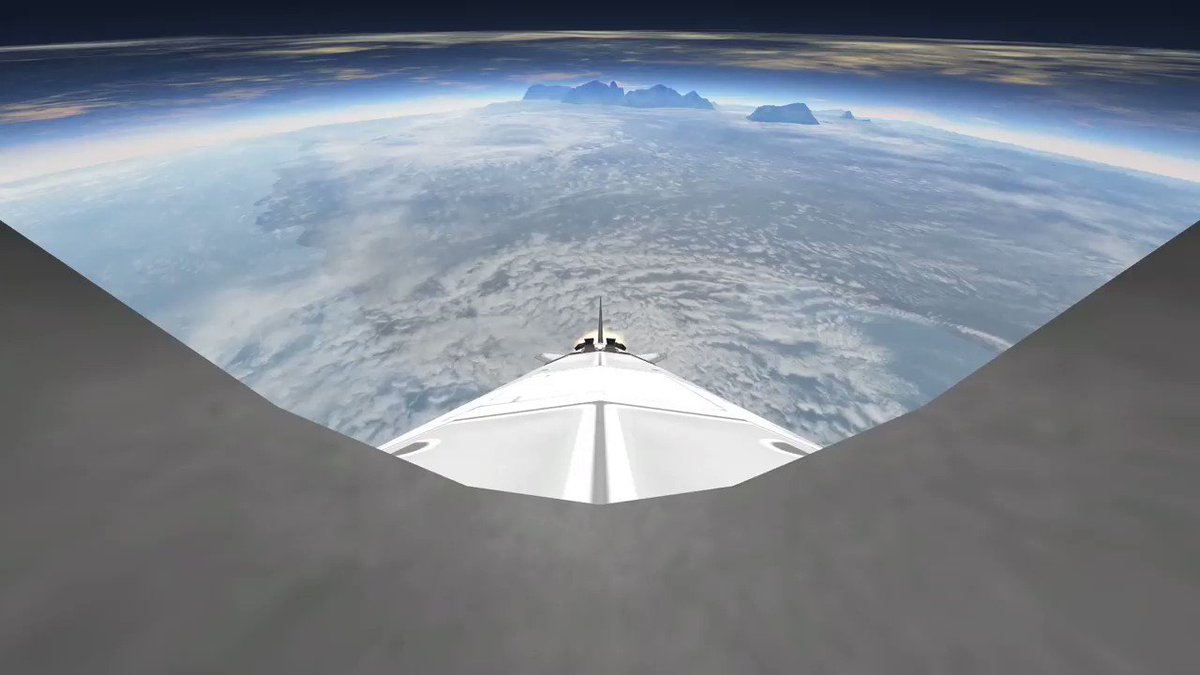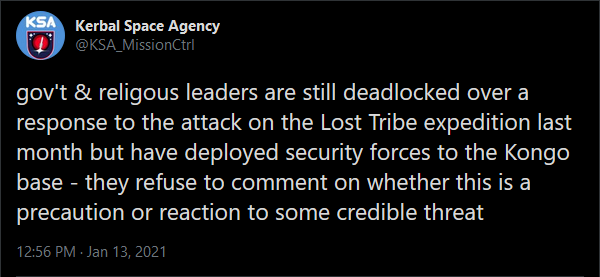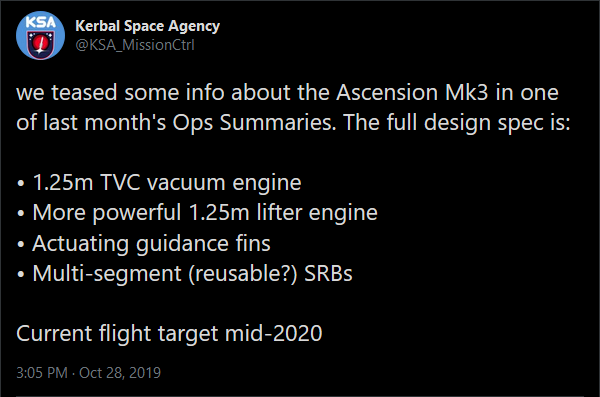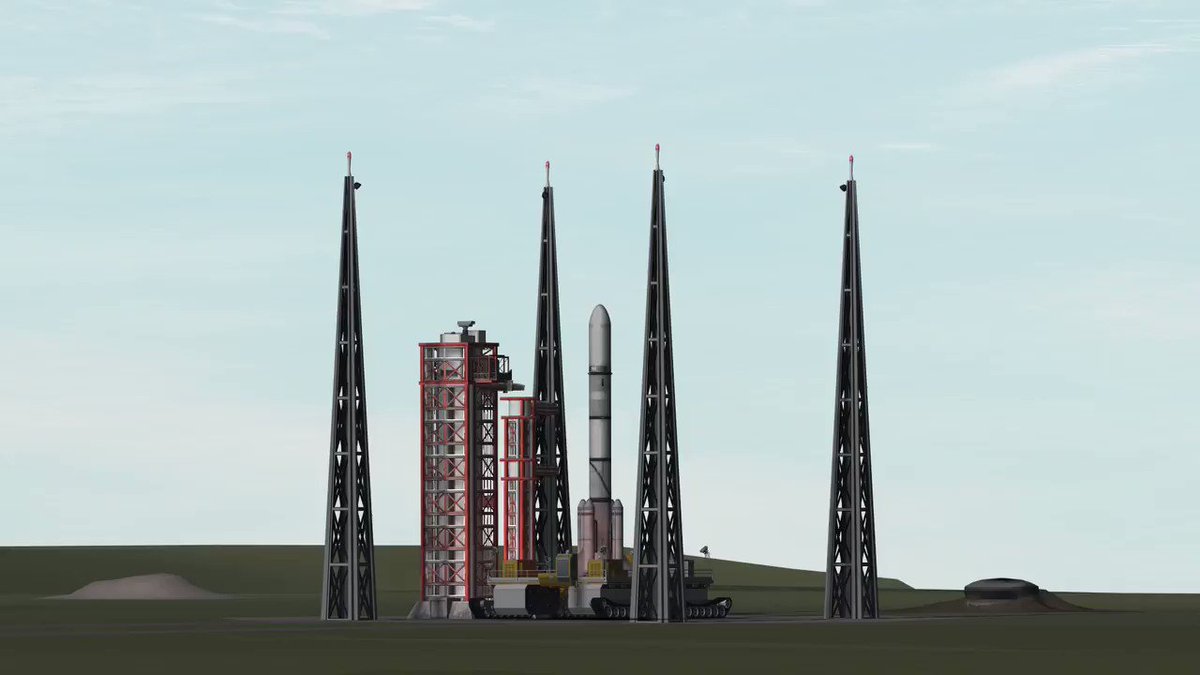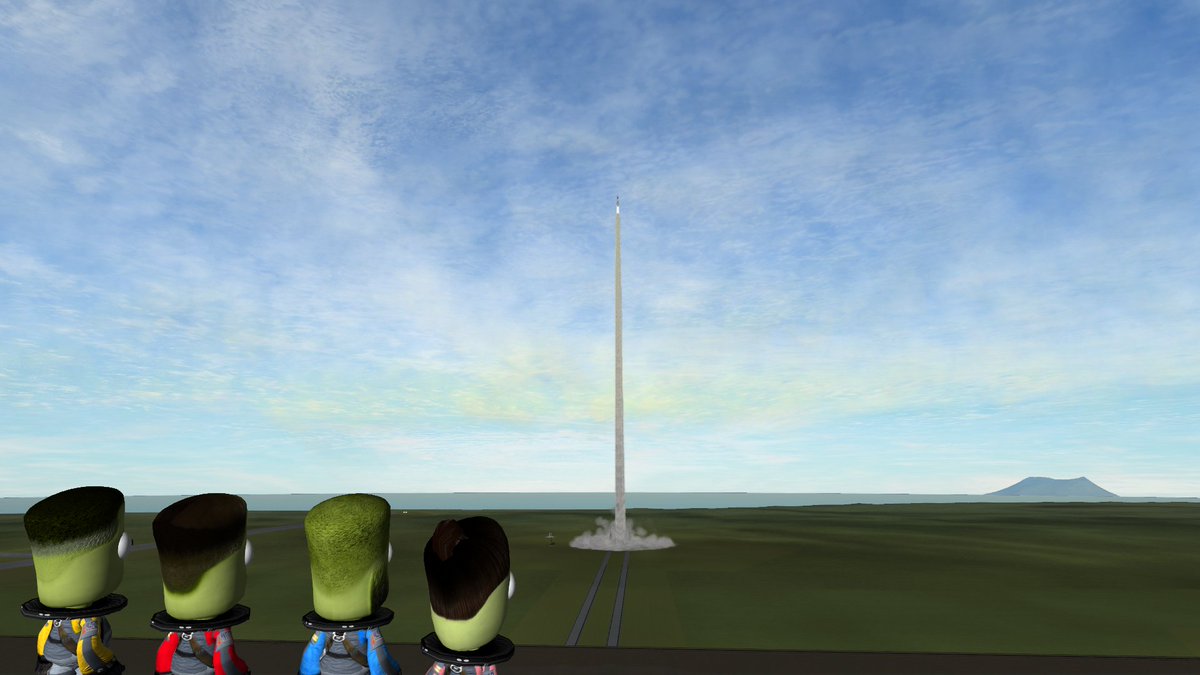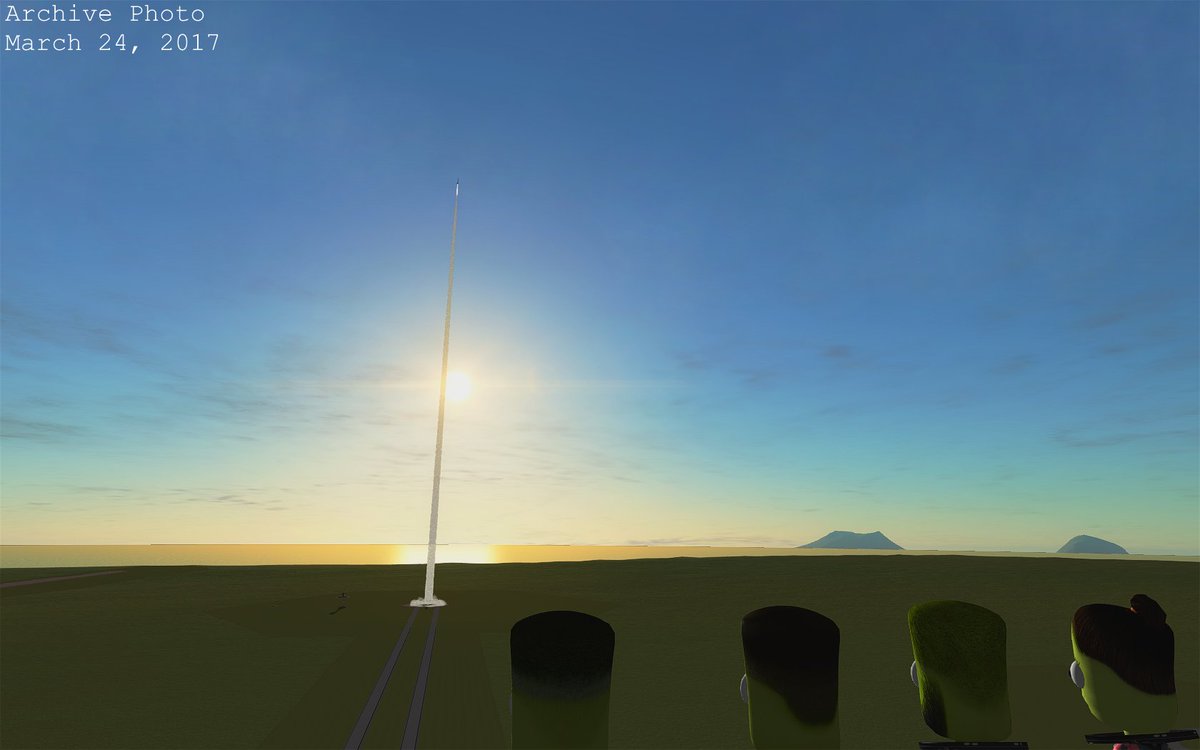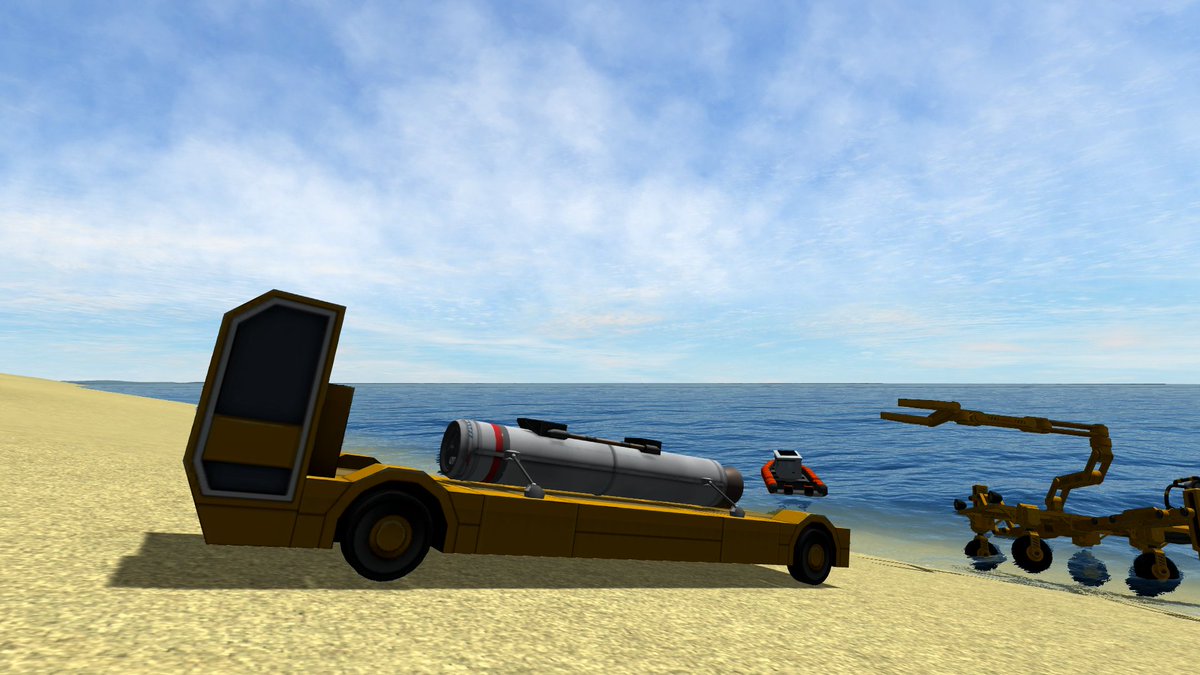|
Progeny Mk1-B Flight Analysis
After three flights the Progenitor team of engineers today submitted their final report to Drew and Simon. Overall the higher-efficiency booster performed as designed, and all three survived impact. Examination of the spent booster cores show all solid fuel was expended and no aberrations were detected in the engine nozzles other than damage incurred from the impact upon landing. The highest apokee achieved was during the non-spinning second flight, where the payload reached an altitude of 1.549 km. Average max G-load during ascent was 13.1Gs and thrust was great enough to prevent the rocket from flipping over during its boost phase, although the nose did rise as high as 90 degrees before burnout. Velocity peaked at 236 m/s. Payload fairing separation and chute deployment went off without a hitch for two out of the three flights, but the second one experienced an anomaly when the booster collided with the payload after it was separated. The chute deployed late after the command was sent but ultimately returned the payload safely to the surface.
The collision on the second flight was thought to have directed the booster on a trajectory that brought it curving back towards the KSC, where it impacted just southwest of the launchpad. However the third launch produced a similar behavior without an impact, and the booster flyback took it all the way to the tracking station, where it narrowly missed impacting one of our communication dishes. Engineers don’t have enough data to form a clear picture as to what led the booster to behave in this manner without an impact when it fell down almost straight after detaching cleanly for the first flight. They suspect it had to do with the extra spin given to the booster by increased fin angle for the third launch.
Spin stabilizing the rocket was a goal of these launches and engineers were disappointed with the performance of the first flight, which had 1.5 degrees of pitch on its fins and barely achieved any roll before burnout. However they were happy to have a direct comparison to the 1.5 degree pitch of the Mk1-A booster. The third launch pitched the fins to 5 degrees and produced a roll rate of 14 deg/s, which was very near the 15 deg/s minimum rate engineers were going for. Coupled with the Mk1-A lower stage they estimate a 2.5 deg pitch will work best for the Mk1-B when used as a second stage.
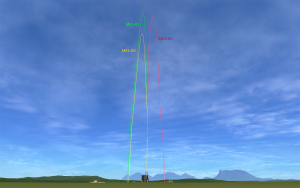
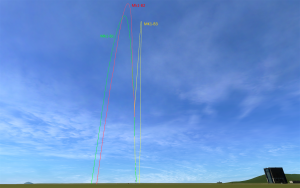
Next Monday Drew, Simon and Wernher will gather to decide on the next steps the Progenitor Program will take.
Is the Monolith Trying to Talk to Us?
Tracking station staff spent the past week analyzing all the data collected from signal analysis during the various rocket launches, where they detected some interference on the frequencies being used to beam down telemetry. They determined the source to be local and ruled out all broadcast sources on the KSC campus, leaving the mysterious Monolith to our north. You can read more in the full press release from earlier this week. No sense has been made so far of the signals picked up from the Monolith, and it does not seem to broadcast unless rocket activity is going on. The tracking station will continue to monitor it closely and see if it picks up anything during our next KerBalloon launch next week.
Temperature Sensor Passes Field Test
Our new 2HOT Thermometer was field-tested this past week on a research trip that went out to collect further data in the region to help scientists put last month’s short heat wave into better perspective. The instrument is the third of four to be tested for future Progeny launches and also use in future KerBalloon flights. There was a minor snafu in the data collected during the trip, which was supposed to be at a much higher altitude, but Kerbin Motion, the meteorology company that contracted us for this research trip, was willing to re-negotiate the terms of our agreement to accept the data. We lost a bit of reputation, but a valuable lesson was learned.
New KerBalloon Launches Next Week
We’ll be receiving 5 new KerBalloon units similar to the one we first tested last month. These will be deployed in various locations in the region surrounding KSC and will carry aloft all four of our Progeny payload instruments: the Aeronomy Sensor Array, Meteorological Survey Package, 2HOT Thermometer and PresMat Barometer. The PresMat will be field tested for the first time on these flights to the upper reaches of the lower atmosphere. Both the thermometer and barometer were developed in partnership with Probodobodyne Inc. The exact timing, schedule and locations for launches are as follows:
| 10/20/16 | 16:20:00 | KSC |
| 10/20/16 | 22:20:00 | Water |
| 10/21/16 | 16:25:00 | Highlands |
| 10/25/16 | 16:40:00 | Grasslands |
| 10/27/16 | 16:45:00 | Deserts |
| Launch Date | Launch Time (UTC) | Launch Location |
Celestial Snapshot of the Week
Easily one of the most impressive planetary captures so far, Commander Val managed to squeeze all seven of the brightest naked-eye planets into a single image frame. Just a day earlier Moho wasn’t high enough to fit in the frame with Sarnus, but thankfully the fast-moving little planet zipped high enough to get into the shot. The only other naked-eye planet not visible in this photo is Dres, which is a hard target to pick out with the naked eye unless it happens to be close to the sun at dawn or dusk when the brightest stars are washed out.
From the Desk of Drew Kerman
Out of Character Behind the Scenes stuffWritten on 9/14/16
wrapping up this week of operations as the KSA finally rolls into positive UT and begins operations on Sept 13th. It was a great first day for the Agency, lots of interaction on twitter to what was posted. Wonder what people will be thinking by the time they get to this point in the timeline, a month later. Let me know in the comments!
I think the hot days are finally past, for the most part anyways. Where I live doesn’t cost me nearly anything in rent or utilities and I have everything I need but there is the downside of no A/C, which means once the mercury gets above 90F things start to get uncomfortable, especially when the PC is running KSP and has everything spooled up, generating a ton of extra heat. It was really frustrating to go a day without work because of the heat, but such are the trade-offs you make in life.
I guess the most bizarre thing to happen this past week of operations was the booster flyback for the Mk1-B 2nd and 3rd flights. I mentioned last week how I had to tweak some things when the booster landed closer to the pad than it did originally. Well good thing because the third launch followed the same flyback ground track and went even further to almost impact the tracking station. It really did come close to taking out a dish. Not sure if those can be damaged individually. Glad I didn’t have to find out.
Here’s a better look at the editing I do for kerbolar eclipses that I talked about in an earlier desk notes where I said I changed the color of the mountains in the distance:
 So what you’re seeing is the original eclipse screenshot captured from the game. Then I waited until just after the sun disappeared behind the mountains and took another screenshot. The mountains in the distance were then composited in Paint.NET and I made some hue/brightness adjustments to them in order to have them look more natural in my opinion. I also use Ambient Light Adjustment to make the scene darker/brighter within the game to adjust for varying light levels (if there are more clouds in the image, I will make the scene darker). I should note though that the vast majority if my images have no post-editing done whatsoever. The game really can look pretty awesome when you set it up right.
So what you’re seeing is the original eclipse screenshot captured from the game. Then I waited until just after the sun disappeared behind the mountains and took another screenshot. The mountains in the distance were then composited in Paint.NET and I made some hue/brightness adjustments to them in order to have them look more natural in my opinion. I also use Ambient Light Adjustment to make the scene darker/brighter within the game to adjust for varying light levels (if there are more clouds in the image, I will make the scene darker). I should note though that the vast majority if my images have no post-editing done whatsoever. The game really can look pretty awesome when you set it up right.
Damn these weekly recaps are getting long aren’t they?







